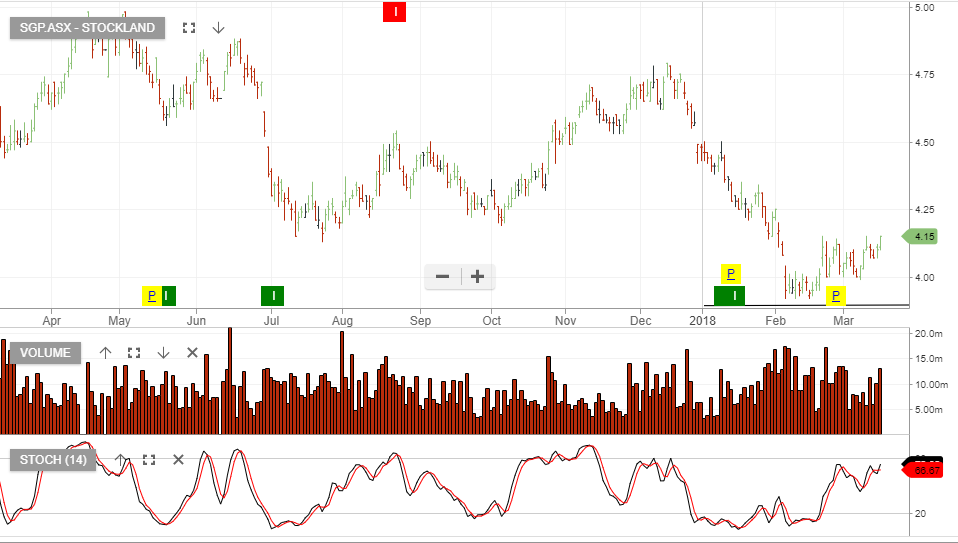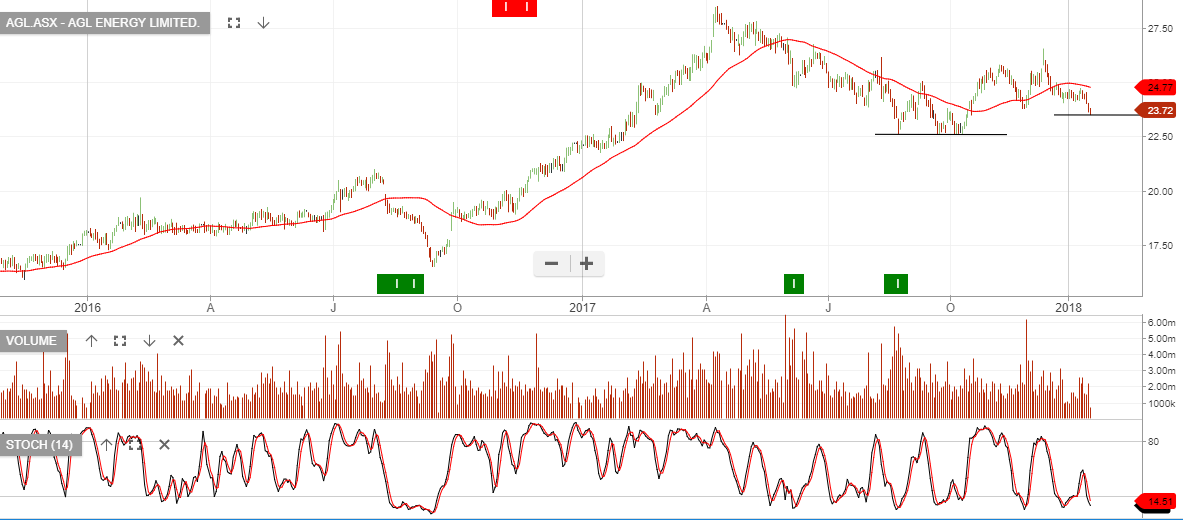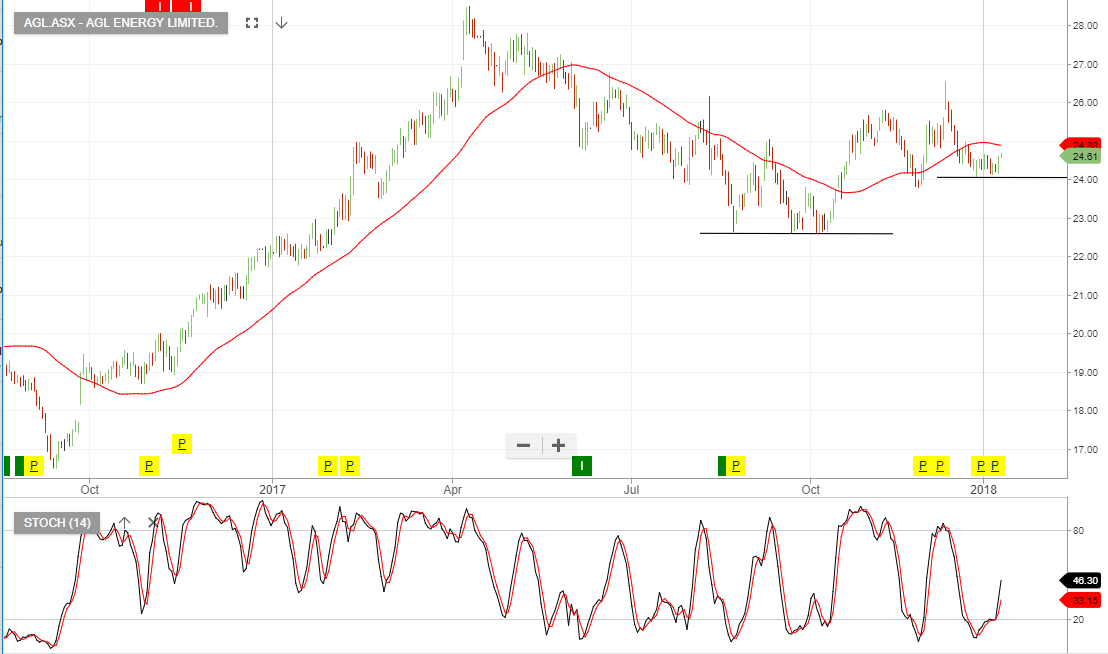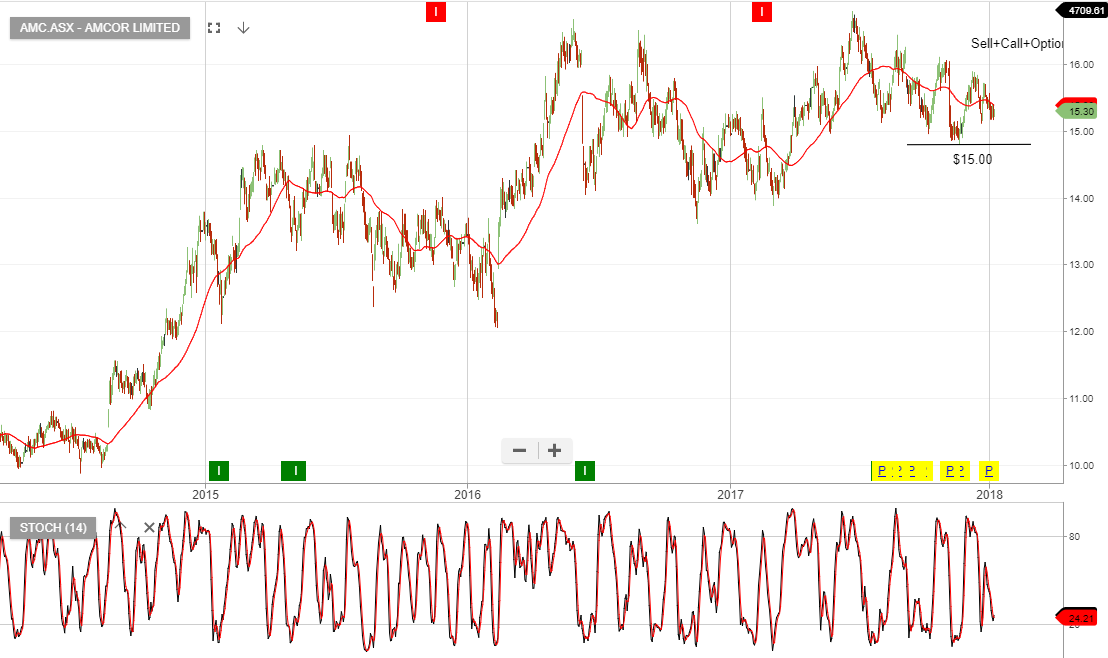Algo Update – Buy AGL
Our Algo Engine generated a buy signal in AGL at $20.50.
With moderate earnings growth into FY19 and the regulators looking to intervene in retail electricity pricing, it is hard to see where the uplift in the share price will come from.
With the stock on a 5.5% forward yield and limited downside risk, we consider AGL a suitable buy-write opportunity for portfolios. Through adding a $22 call option we’re generating 10 – 12% annualised cash flow.
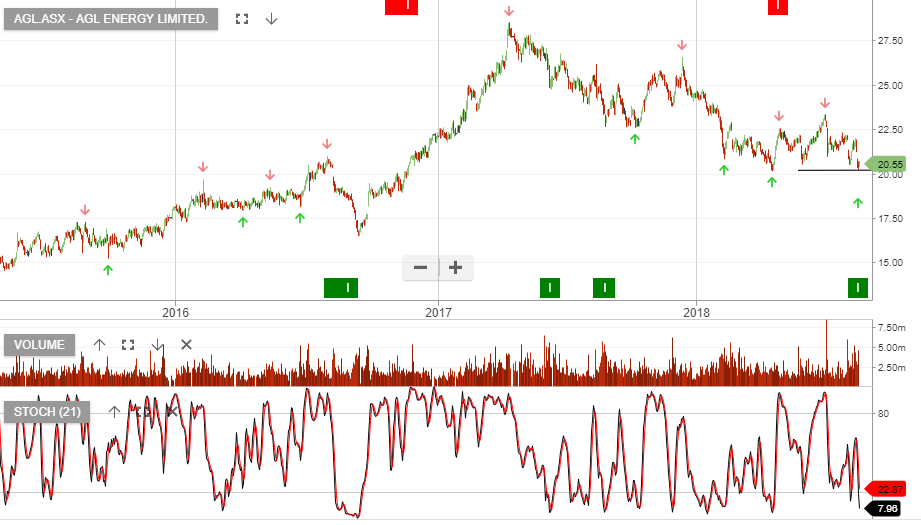
AGL
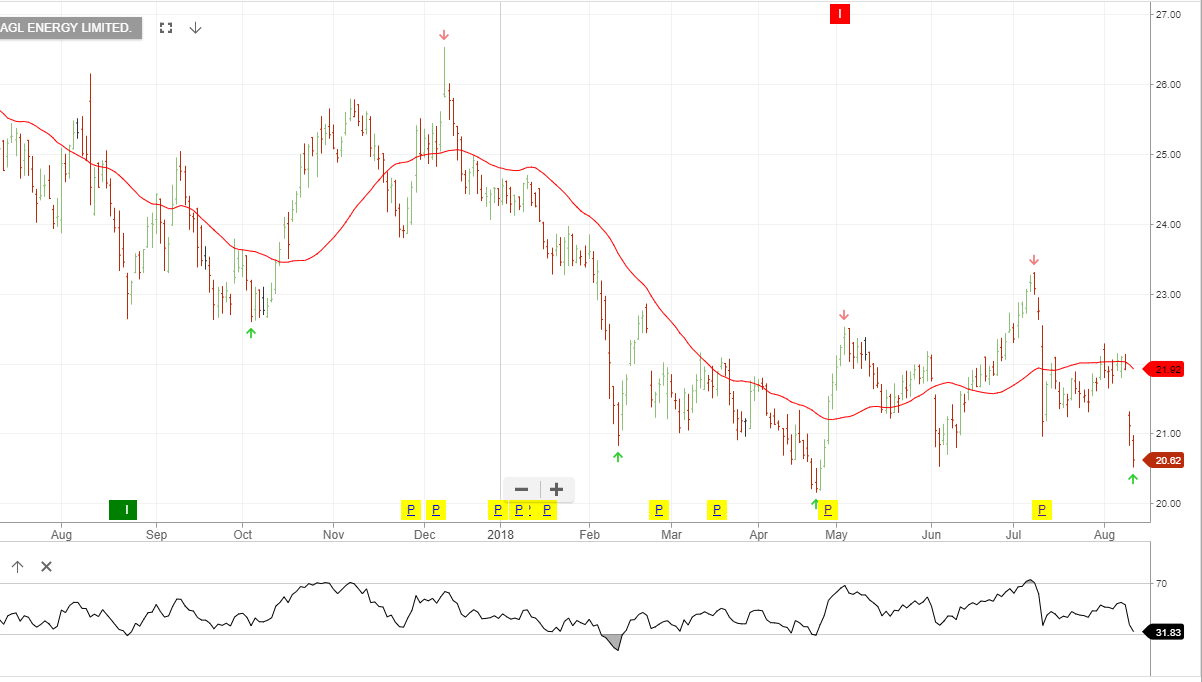
 AGL
AGL

